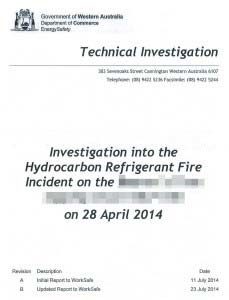The Recent Perth Truck Explosion: Why It Won’t Happen To Our Clients
In April, the refrigerant-contaminated air in the cab of a truck caught fire and severely injured the driver and passenger. The scariest thing is that it could have been much worse. They were driving slowly down a suburban street in Perth at the time, and they managed to jump out the doors and escape the flames in the cab. Nobody other than the occupants was injured, but if the same thing had happened on a crowded city freeway, then the results could have been catastrophic.
That’s why there was a government investigation into the incident. What did the investigation find? A series of failures led to the release of high-pressure, flammable refrigerant into the cab. Who was responsible? Ultimately, the company that had overhauled the 14-year-old truck’s air conditioning system five months previously were at fault. Here’s what happened.
1. A Failed Condenser Fan = Pressure Build-up
First, the fan on the condenser failed because of a dirty electrical contact that was located near one of the front wheels. When the fan failed, heat and pressure in the air conditioning system started to build up.
2. An Ineffective Pressure Switch and No Relief Valve
The type of compressor used in the retrofit did not have a relief valve, and the aftermarket pressure switch that had been installed was of the wrong type. Whoever had done the refurbishment of the air conditioning system was guilty of two deal sins: they hadn’t followed the manufacturer’s recommendations, and they didn’t fully understand how the system and its components were supposed to work.
3. A Failed Valve = Weakest Link
The TX valve that actually failed was, ironically, not faulty. The extreme pressure build-up brought it past its tolerances, and it allowed high pressure refrigerant to enter the cab.



